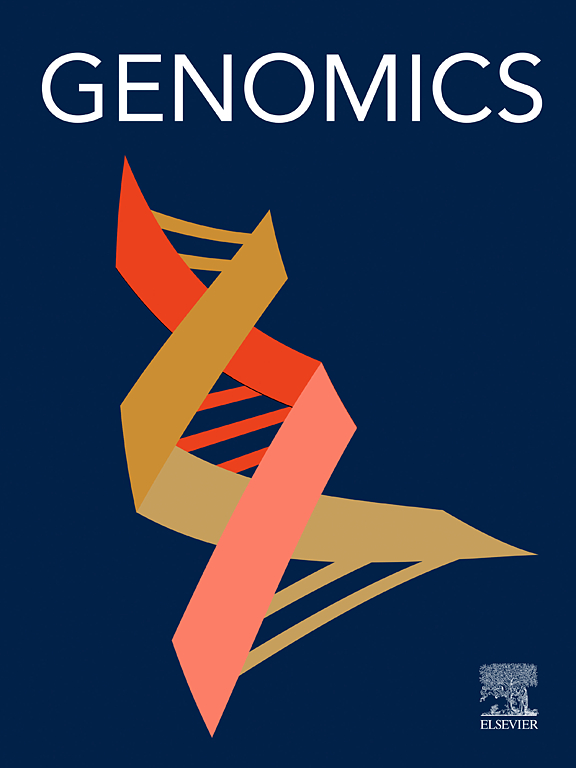抗菌肽- dm在肝癌中的抗癌作用及机制研究
IF 3.4
2区 生物学
Q2 BIOTECHNOLOGY & APPLIED MICROBIOLOGY
引用次数: 0
摘要
背景以往的研究表明,蟾蜍皮肤分泌的生物活性分子具有抗癌作用。Cathelicidin-DM (C-DM)是蟾蜍皮肤分泌的一种生物活性肽,但其对肿瘤细胞的作用及其分子机制尚不清楚。方法采用CCK-8检测不同两栖动物肽对肿瘤细胞活力的影响。采用集落形成、流式细胞术和Transwell技术研究C-DM对肝癌细胞功能的影响。采用异种移植模型评价C-DM的抗肿瘤活性。采用RNA-seq法确认差异表达基因(DEGs),并对其进行GSEA检测。通过细胞实验验证LC中C-DM的分子调控机制。结果sc - dm (100 μg/mL)对HepG2和Hep3B细胞的增殖、迁移、侵袭及细胞周期进程均有显著抑制作用,并促进细胞凋亡。体内实验证实了C-DM的抗肿瘤作用,但其毒性较低。DEG DHRS3富集于JAK-STAT通路。DHRS3过表达促进了LC细胞的恶性表型,激活了JAK-STAT通路。然而,C-DM的加入削弱了DHRS3的致癌特性,抑制了JAK-STAT通路。结论C-DM通过下调DHRS3并介导JAK-STAT通路发挥抗LC作用,提示C-DM可能是治疗LC的有前景的候选药物。本文章由计算机程序翻译,如有差异,请以英文原文为准。
Study on the anticancer function and mechanism of cathelicidin-DM in liver cancer
Background
Previous studies have shown that bioactive molecules secreted by toad skin possess anticancer properties. Cathelicidin-DM (C-DM) is a bioactive peptide secreted by toad skin, but its effects on tumor cells and the underlying molecular mechanisms remain unknown.
Methods
The impact of varying amphibian peptides on the viability of various tumor cells was determined by CCK-8. The influence of C-DM on liver cancer (LC) cell function was investigated using colony formation, flow cytometry, and Transwell. The anti-tumor activity of C-DM was evaluated by xenograft models. RNA-seq was done to confirm differentially expressed genes (DEGs), which were subject to GSEA. Cellular experiments were performed to verify the molecular regulatory mechanism of C-DM in LC.
Results
C-DM (100 μg/mL) had a significant repressive impact on the proliferation, migration, invasion, and cell cycle progression of HepG2 and Hep3B cells, and facilitated apoptosis. In vivo experiments validated the anti-tumor impact of C-DM, while its toxicity was low. DEG DHRS3 was enriched in the JAK-STAT pathway. Overexpression of DHRS3 fostered the malignant phenotype of LC cells and activated the JAK-STAT pathway. However, the addition of C-DM weakened the oncogenic properties of DHRS3 and repressed the JAK-STAT pathway.
Conclusion
C-DM exerted an anti-LC effect by downregulating DHRS3 and mediating the JAK-STAT pathway, indicating that C-DM may be a promising candidate drug for LC treatment.
求助全文
通过发布文献求助,成功后即可免费获取论文全文。
去求助
来源期刊

Genomics
生物-生物工程与应用微生物
CiteScore
9.60
自引率
2.30%
发文量
260
审稿时长
60 days
期刊介绍:
Genomics is a forum for describing the development of genome-scale technologies and their application to all areas of biological investigation.
As a journal that has evolved with the field that carries its name, Genomics focuses on the development and application of cutting-edge methods, addressing fundamental questions with potential interest to a wide audience. Our aim is to publish the highest quality research and to provide authors with rapid, fair and accurate review and publication of manuscripts falling within our scope.
 求助内容:
求助内容: 应助结果提醒方式:
应助结果提醒方式:


